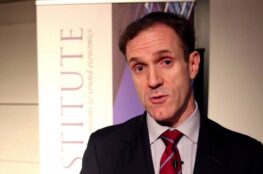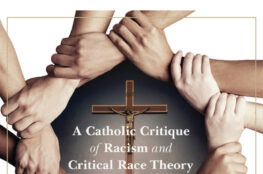Whenever I start to wonder why the Catholic Church in America is so bloodless, confused, and indifferent toward the deposit of faith, I quickly peruse the websites of Patheos, First Things, and the National Catholic Reporter to find my answers. This year’s “Reformation Day,” coupled with a certain notorious papal visit to Sweden, has really brought out the worst in some people, and by the “worst” I mean the worst sort of equivocating in the name of “dialogue” and “unity.” In times past, I thought one of the central problems with post-Vatican II American Catholicism is its inordinate desire to be accepted as “good liberals” in a secular democracy. It now seems to me that part of being accepted as such meant being accepted by the Protestant elites who, for all practical purposes, ran (and to some extent still run) America’s socio-political machinery. Things started to change a bit in the late 1970s when Catholics and Evangelicals became jointly concerned about abortion (and some other moral matters). Now, however, Catholics are desperate to divorce themselves from that “fever-swamp Christianity” of days gone by while looking to the collapsing mainline Protestant confessions for inspiration. Sometimes Catholics will call this “dialogue”; in truth it’s merely capitulation.
The Eastern Orthodox handle themselves a bit better, at least as far as rejecting limp-wristed ecumenism masked by vacuous terms like “encounter” and “witness” is concerned. Those with eyes to see know of course that American Orthodoxy, more than American Catholicism, struggles with “Protestant captivity,” largely due to the influx of converts into Orthodoxy’s fold during the 1990s and early 00s. While some of these converts have packed their bags and left, numerous influential Orthodox clerics (and a few laymen) continue to push for an Orthodoxy that amounts to little more than “Byzantine Rite Calvinism.” Heck, even well-meaning cradle Orthodox are often duped into believing that old-fashioned Protestant polemics against Rome, when dressed up with some Greek jargon, represents an authentic articulation of “true Orthodoxy” over-and-against “Papist errors.” This leads to all sorts of nonsense, such as fanciful distinctions between what the Orthodox have (allegedly) “always believed” and what Catholics now (allegedly) “do.” (Yes, I have been told straight up that among the (alleged) differences between Orthodox and Catholics, one can list Mary worship, statue worship, saint worship, and Communion worship.)
Perhaps it’s cliché to say that things will get worse before they get better, but let’s not forget that clichés are clichés for a reason. Regardless of what happens next Tuesday, there can be little doubt that the country will be even more politically torn apart than it already is. Christians (of whatever stripe) will have to select sides, and there will be plenty of finger pointing to go around. Those Catholics (and Protestants and Orthodox) who insist that we must vote for Donald Trump or else are going to remain at odds with those Catholics who follow the Church’s actual teachings when it comes to voting. That is to say, those Catholics who refuse to materially cooperate with evil are apt to be marginalized by both Left-wing Catholics (who, of course, have no problem materially cooperating with evil) and Right-wing Catholics, at least for a time. Remember: If Hillary Clinton prevails over Trump, it’s everyone’s fault for not violating their consciences or embracing “the lesser of two evils”; the fact that American conservative politics has degraded to the point where a buffoonish billionaire can hijack the Republican Party has nothing to do with it (or so they say).
Some harbor the hope that when the dust finally settles, a new, more diversified, politics might emerge and that Christians (specifically Catholics) will finally be able to have an unadulterated say in the direction of the Republican Party or, more likely, a new party that splinters from it. I am not so sure. If Trump-style “conservatism” is the new flavor of the decade (just as Tea-Party conservatism was briefly before), then it is likely that many conservative-to-traditional Catholics will choose remain faithful to that brand. Why? Because many are fearful of what is coming and the idea of a “strong man” savior will always be appealing, especially when the new political enemy is a woman. Also, the idea of Trump supporters openly embracing an orthodox form of Catholic politics is hard to fathom when such an embrace would mean that at the core everything they professed about the necessity of voting for someone like Trump is simply wrong. Sure, perhaps some of these well-meaning souls can be converted to the truth, but with so many traditionalist outlets doubling-down on the Donald, it is reasonable to fear that a significant contingent of their followers will never return to the light.




November 1, 2016
The struggles of Christianity-in-general in the modern times is like the nerdy kid who tries to impress the cool kids by throwing his few friends under the bus; the cool kids are not impressed and the nerd is more alienated than before.
November 1, 2016
You had me until ” … especially when the new political enemy is a woman.”
Huh? The same people supported Palin, and, remotely, Thatcher.
Moreover, Hillary inspires a level of antipathy that other female “political enemies” never did, e.g., Geraldine Ferraro.
Hillary is just an intensely unlikeable person. It’s almost a super-power. Even Oprah said to her minions something to the effect of, “you don’t have to like her, just vote for her.”
November 1, 2016
Non placet.